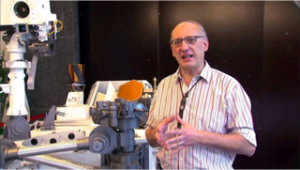|

|
The Guidance, Navigation, and Control Challenges of Landing on Mars and Europa
- Miguel San Martin
NASA Jet Propulsion Lab, USA
Wednesday, June 27, 6:30 PM – 7:30 PM
Ballroom C, Wisconsin Center
With its thin atmosphere, uncertain wind and terrain, and ever-increasing science requirements, robotic missions to the surface of Mars have presented enormous challenges to the Entry, Descent, and Landing (EDL) and Guidance, Navigation, and Control (GN&C) engineers. Throughout the years, these challenges have been met with a series of landing architectures that spawned different degrees of passive and active control, from the ballistic airbag landers in the Mars Pathfinder and Spirit and Opportunity Rovers, to the guided-entry, SkyCrane-delivered Curiosity. Landing on Europa (the Jovian moon that may have the conditions to harbor life) presents a different set of challenges over a Martian landing. While Europa’s lack of atmosphere relieves the landing engineer from the complexities of heatshields and parachutes and the vagaries of an atmosphere, they now face the enormous challenges of bringing large amounts of fuel and powerful propulsion to do the job the atmosphere does on Mars, while dealing with an extremely uncertain surface topography and radiation environment. These challenges are being addressed with increased automation based on new GN&C sensors and algorithms. In this talk, I will describe the challenges of both Mars and Europa landings, and the intellectual journey trod by engineers in meeting them.
Miguel San Martin grew up in Argentina and came to the United States after high school to pursue his dream of working for NASA. He graduated summa cum laude from Syracuse University with a degree in Electrical Engineering, being named Engineering Student of the Year. He received his Masters degree from the Massachusetts Institute of Technology in Aeronautics and Astronautics Engineering with a specialization in Guidance, Navigation, and Control for interplanetary space exploration. Upon graduation, he was hired by the Jet Propulsion Laboratory, the NASA center that specializes in interplanetary space exploration.
Early in his career, he participated in the Magellan mission to Venus and the Cassini mission to Saturn. He was later named Chief Engineer for the Guidance, Navigation, and Control system for the Pathfinder mission, which landed Sojourner, the first robotic vehicle to land on Mars. He later assumed the same role for the highly successful mission that landed the robotic vehicles, Spirit and Opportunity on Mars in 2004. Most recently, he was the Chief Engineer for Guidance, Navigation, and Control for the Mars Science Laboratory, which landed successfully the one-ton rover, Curiosity, on the surface of Mars on August 5, 2012. He was a co-architect of Curiosity’s innovative SkyCrane landing architecture, receiving the NASA Exceptional Achievement in Engineering Medal for his contributions. He was named JPL Fellow in 2013. |



